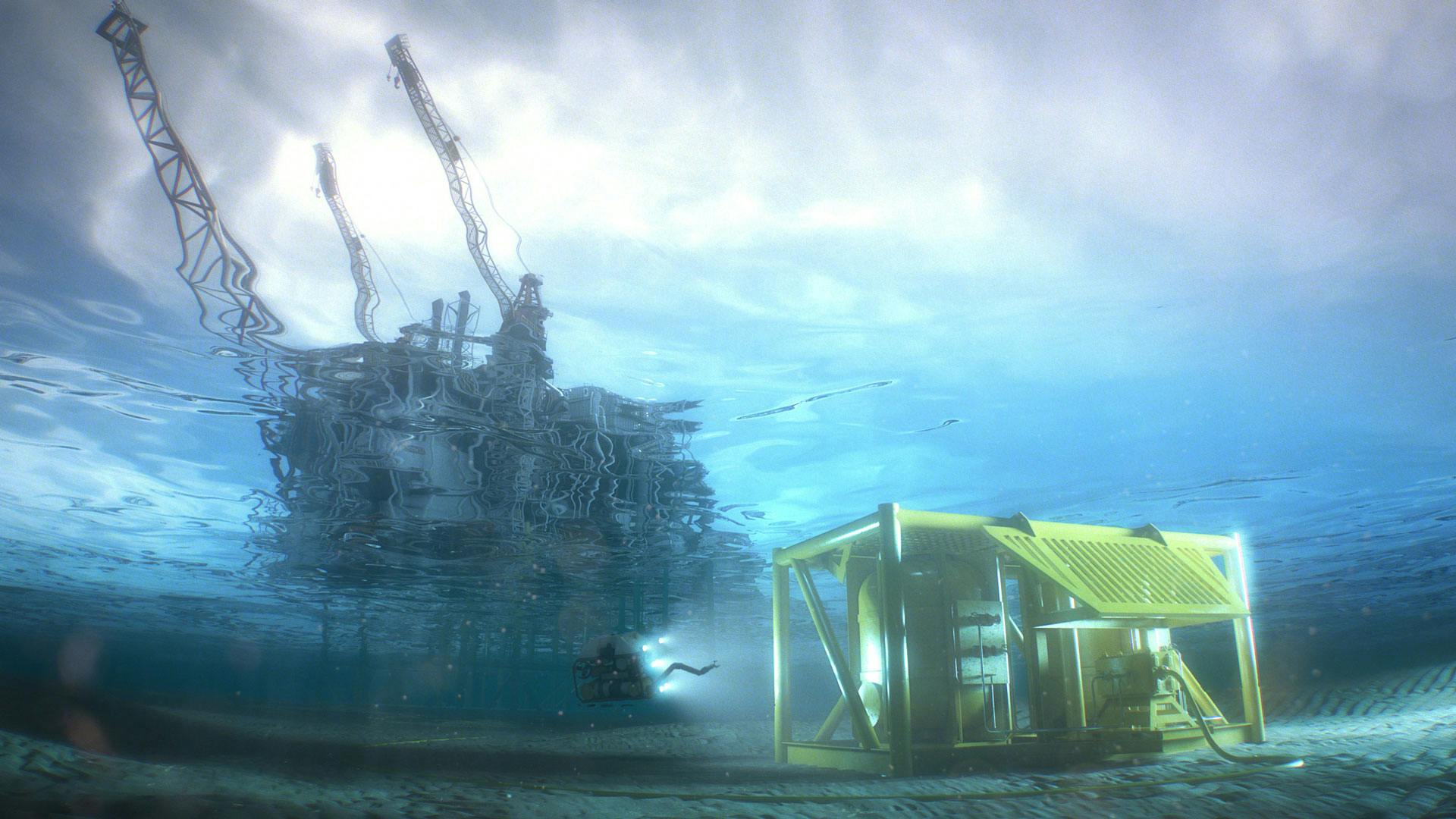Our subsea storage technology provides a subsea storage solution for all relevant types of fluids, creating new opportunities for our customers' energy portfolios. The technology brings a new and unique solution for the safe storage of larger volumes of fluids such as enhanced oil recovery (EOR) chemicals, production chemicals, oil, condensate, and maritime fuels. The subsea storage system can be placed at any water depth and adjusted in capacity depending on customer requirements.
New Joint Industry Project goes subsea to provide a storage solution for all types of fluids
The latest developments of the game-changing subsea storage technology, enable a safer and low-emission future, in partnership with Equinor, Shell, The Research Council of Norway, The Net Zero Technology Centre, and the American Bureau of Shipping (ABS). The result is a system that debottlenecks topside capacity challenges and provides a green energy storage solution for the shipping industry.
NOV recently signed an agreement with Joint Industry Project (JIP) Partners Equinor, Shell, The Research Council of Norway, The Net Zero Technology Centre, and the American Bureau of Shipping (ABS) as part of the qualification and final product validation for subsea storage technology. This project unites a group of industry leaders actively enabling an economical subsea storage solution for the market. The storage system provides added flexibility by offering unlimited seafloor space when topside space is constrained and avoiding the need for umbilicals for tie-backs. The system mitigates health, safety, and environmental (HSE) challenges by reducing power consumption, minimizing human interaction, and decreasing vessel trips and emissions.
Innovation and teamwork are going to be critical to meeting industry decarbonization ambitions, and this project embodies both of these values. ABS is proud to be part of the team supporting the development of this innovative new technology using our extensive experience in alternative marine fuels and offshore classification leadership to advance its safe application.
Patrick Ryan
ABS Senior Vice President of Global Engineering and Technology
The final product validation of the subsea storage technology has begun. It includes a submerged large-scale open system demonstration and a closed-loop system demonstration to be tested and completed by 2023. The objective of the tests is to verify the system design for all types of fluids, ensuring reliable functionality to unlock a safe, profitable, and economical product for the market. The storage technology has matured over several years, and this project will be the last step of the qualification program. Several studies are ongoing, and NOV aims to deliver the first project in late 2024 or early 2025. Comparing the NOV subsea storage system's CO2 emissions to a floating, storage and offloading (FSO) vessel over ten years shows a saving of 140,000 tons of CO2.
The International Maritime Organization (IMO) emission strategy by 2030 is to reduce CO2 emissions per cargo transport work by 40%, aiming at 70% in 2050, compared to 2008. Subsea storage of ammonia will be a crucial element in the distribution network for offshore ammonia storage to cargo transport. Ammonia is carbon- and sulfur-free and gives clean combustion without the generation of CO2 or SOX.
NOV's goal with developing large subsea storage units (SSU) is to become a primary contributor to the distribution network of the global greenhouse gas reduction strategy.
The Net Zero Technology Centre sees this technology as a key enabler for the implementation of low and zero carbon fuels in the offshore environment. Working with a consortium of industry that spans both the UK and Norwegian energy sectors offers a unique opportunity to apply this technology across various offshore oil and gas production activities and vessels and aligns with our roadmap to deliver technology to help reduce UK Continental Shelf operational emissions to net zero.
Charlie Booth
Project Engineer, Net Zero Technology
If you are interested in collaborating on this project, or joining our mission to provide a subsea storage technology for all types of fluids, contact us at [email protected].
NOV Live & Webinars
NOV Live - Subsea oil and condensate storage
Join us as we kick off this week's NOV Live episode. We're talking subsea storage systems, unmanned operations, and low carbon footprint. We'll have our #AskAssaad segment and our #RigGeeks post of the week - with a prize for the winning answer to today's trivia question.
NOV Live - Structures and Subsea Composites
Join us on #NOVLive as we speak with Simon Eves about fiber glass innovation driving down CAPEX and OPEX in offshore subsea projects. We'll also have our regular #RigGeeks segment (with prizes!).
Webinar - Unlock stranded reserves with mobile production and subsea
Unlock marginal and stranded reserves by combining of integrating mobile production, topside and subsea technologies provide a truly unique hybrid solution for flexible, economical field development that’s also reusable, and re-deployable.
Related Products
Subsea Oil Storage System
We enable emission reduction and flexible storage of oils and condensates
Subsea Chemical Storage System
We help solve topside capacity challenges and enable cost-effective electrification, improved field economics and flow assurance.
Flexible Pipe
Our products deliver proven, innovative, and high-performance technology suitable for shallow and deep-water applications.
APL
APL designs and manufactures cost-efficient and innovative technology with a focus on products in the interface between the seabed and the floating units.
Offshore Production Solutions
Our team of recognized brands come together to streamline, optimize, and modernize offshore production, no matter the stream.
